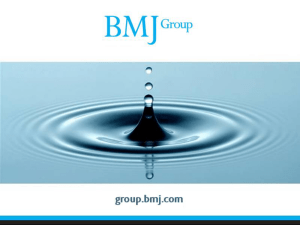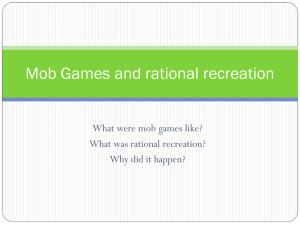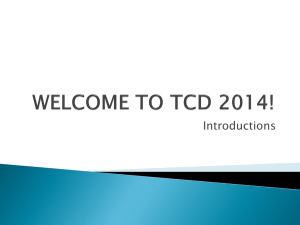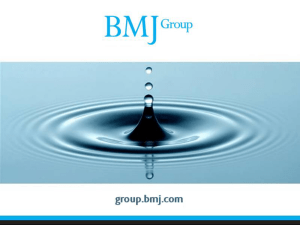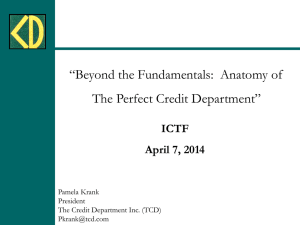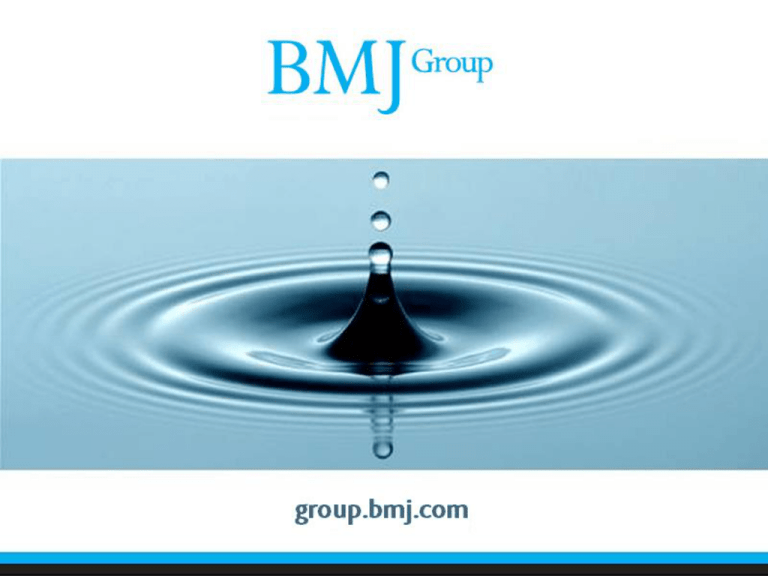
MOB TCD
Spinal Muscles
Professor Emeritus Moira O’Brien
FRCPI, FFSEM, FFSEM (UK), FTCD
Trinity College
Dublin
MOB TCD
Thoracolumbar Fascia
• Three layers of fascia
enclosing the muscles of
the posterior abdominal
wall
• Laterally fascia is fused
and is continuous with
internal oblique and
transversus abdominis
Thoracolumbar Fascia
Posterior layer
• Covers the erector spinae is very
•
•
•
strong three layers
It is reinforced by the aponeurosis
of latissimus dorsi
Medially it is attached to lumbar and
sacral spinous processes
Superiorly it extends over the back
muscles to be continuous with the
deep fascia of the neck
MOB TCD
MOB TCD
Thoracolumbar Fascia
• Partial origin to internal
oblique
• Transversus abdominus
• Latissimus dorsi
• Tensile strength of 2000 psi
• Most important
non-contractile structure
MOB TCD
Thoraco-Lumbar Fascia
• Anterior layer
• Covering quadratus
lumborum muscle,
separating it from the
psoas major
• Attaches in front of
lumbar transverse
processes and from iliac
crest to12th rib
MOB TCD
Thoraco-Lumbar Fascia
• Middle layer
• Between erector spinae
and quadratus lumborum
• Attached to tips of
transverse processes of
lumbar vertebrae
• Extending in a vertical
plane between the iliac
crest and the 12th rib
• Posterior layer attached to
spinous process covers
sacrospinalis
MOB TCD
Superficial Muscles
•
•
•
•
•
•
Superficial layer
Trapezius
Latissimus dorsi
Levator scapulae
Rhomboid minor and major
Connect upper limb to trunk
MOB TCD
Trapezius
• The trapezius is a large, flat,
triangular muscle, covering the
posterior aspect of the neck and
superior half of the trunk.
• It attaches the pectoral girdle to
the skull and the vertebral
column.
• It also helps in suspending the
shoulder girdle and rotates the
scapula.
• The trapezius is supplied by the
spinal part of the accessory, the
eleventh cranial nerve.
MOB TCD
Trapezius
Origin
• Medial third superior nuchal line
• Ligamentum nuchae and spines and
inter spinous ligaments of all thoracic
vertebrae
Insertion
• Upper third to lateral third of posterior
border of clavicle
• Middle third to medial border of
acromion and the superior lip of the
crest of the spine of the scapula
MOB TCD
Trapezius
• Lower third fibres insert into the
•
•
•
•
•
medial end of spine of scapula
Nerve supply: spinal accessory
nerve (C1 - 5)
Proprioceptive fibres from the C3 - 4
cervical plexus.
Actions: upper fibres elevate and
extension of the neck
Middle fibres retract scapula
Upper and lower fibres rotation of
scapula
MOB TCD
Trapezius
• The upper fibres elevate the scapula,
shrug shoulders.
• The intermediate fibres draw the
medial border of the scapula near to
the midline and press against the
chest wall.
• The lower fibres pull the scapula
downward and depress the tip of the
shoulder.
• The three parts of the trapezius, acting together, draw
the scapula medially and rotate the glenoid fossa
superiorly in abduction of the shoulder.
MOB TCD
Trapezius
• The trapezius muscle is involved in
throwing events
• In racquet sports and in overhead
movements
• Middle fibres help to stabilise the
scapula in rowing and swimming
• It prevents the glenoid fossa being
pulled down when lifting heavy
objects with your arms
• It also helps when you are holding
an object overhead
MOB TCD
Latissimus Dorsi
• The latissimus dorsi is a large, wide
fan-shaped muscle covering the
inferior part of the back
• It arises from the spines of the
lower six thoracic vertebrae
• The lumbar fascia
• The posterior third of the outer lip of
the iliac crest
• The lower three ribs and the inferior
angle of the scapula
MOB TCD
Latissimus Dorsi
• It spirals around the teres major
• Forms medial part of the posterior
fold of the axilla
• It is inserted by a flat white
bilaminated tendon into the floor of
the bicipital groove
• Nerve supply: thoracodorsal nerve
C6,7,8
MOB TCD
Latissimus Dorsi
• Extends the shoulder
• Powerful adductor of the arm
(climbing muscle)
• Rotates the humerus medially
at the shoulder joint
• The latissimus dorsi is an
accessory muscle of
respiration if humerus is fixed
• It is supplied by the thoracodorsal nerve C6,7,8
• It is involved in activities such as paddling a
canoe, climbing and swimming
MOB TCD
Latissimus Dorsi
• In freestyle swimming, the
latissimus dorsi is a prime
mover in the down stroke of
the arm, mainly an extension
movement and some medial
rotation
• In canoeing, the muscle is a
prime mover in the down
stroke of the paddle, a
movement of extension,
adduction and medial rotation
MOB TCD
Superficial Muscles
Deep to trapezius
• Levator scapulae
• Rhomboid minor and major
• They connect upper limb to
trunk
MOB TCD
Levator Scapulae
• The levator scapulae muscle lies
under the trapezius
• It has its origin from the transverse
processes of the upper four
cervical vertebrae (C1 to C4)
• Inserted into the superior part of
the medial border of the scapula
MOB TCD
Levator Scapulae
• The action of the levator scapulae
is to raise the medial margin of the
scapula and in doing so rotate it so
as to produce downward rotation
of the glenoid cavity
• The nerve supply is C5 via the
nerve to the rhomboids from the
roots of the brachial plexus
MOB TCD
Rhomboid Major and Minor
• The rhomboid major and minor
muscles lie deep to the trapezius
and are not always distinct from
each other
• Rhomboid minor arises from C7
and T1 vertebrae
• The major is about twice as wide
as the minor
• Arises from T2-5
• Appearing as parallel bands, they
both pass inferiolaterally from the
vertebrae
.
MOB TCD
Rhomboid Major and Minor
• The rhomboid major and minor
muscles work together
• Retract the scapula and rotate it
to depress the glenoid cavity
• Help the serratus anterior
muscle to hold the scapula
against the thoracic wall
• Fix the scapula during
movements of the upper limb
• The nerve supply is C5 via the
nerve to the rhomboids from the
roots of the brachial plexus
MOB TCD
Intermediate
• Serratus posterior is an
accessory muscle of respiration
Superficial Layer:
Splenius Capitis and Cervicis
• Inferior half of ligamentum nuchae and
•
•
•
•
all the spinous processes of T1-T6
Insertion: lateral aspect of mastoid
process
Lateral third of superior nuchal line of
occipital bone deep to
sternocleidomastoid
Splenius cervicis
Posterior tubercles of transverse
processes C1-C4 posterior to levator
scapulae
MOB TCD
MOB TCD
Splenius Capitis and Cervicis
• Acting alone
– Lateral flexion
– Rotation of head and neck to
•
same side
Acting together
– Extension of neck and head
– Nerve supply: dorsal rami
inferior cervical nerves.
MOB TCD
Intrinsic Muscles of Back
• Deep layer of postural muscles
attached to vertebral column and
the back of head
• Anatomically in three layers:
superficial, intermediate and
deep
• Deep layer of muscles is
responsible for movement of
vertebral column
• Represents the intrinsic group of
back muscles
MOB TCD
Intermediate Layer: Erector Spinae
• Lies between anterior and posterior
layers of thoraco-lumbar fascia
• Three vertical columns:
– medial = spinalis
– intermediate = longissimus
– lateral = iliocostalis
• Origin: a common broad band from
posterior aspect of iliac crest
• Sacrum
• Sacroiliac ligaments
• Sacral and inferior lumbar spines
Erector Spinae:
Iliocostalis and Longissimus
Iliocostalis
• Forms lateral column of erector
spinae
• Inserts into angles of the ribs
Longissimus
• Forms the intermediate column
of erector spinae
• Attached to transverse
processes of thoracic and
cervical vertebrae
• Mastoid process of temporal
bone (muscle has a herring
bone appearance)
MOB TCD
MOB TCD
Erector Spinae: Spinalis
• Narrow medial column of
erector spinae (relatively
insignificant)
• Extending to spinous
processes of superior
lumbar and inferior thoracic
region
MOB TCD
Deep Layer: Transversospinal
• In the groove between transverse
processes and spines of vertebrae
• Collectively termed the
transversospinal muscles
• Consists of several short muscles
• Semispinalis
• Acting bilaterally: extend and
stabilise spine
• Acting unilaterally: rotate spine to
opposite side and laterally flex
MOB TCD
Semispinalis
• Three part muscle
– Thoracis
– Cervicis
– Capitis
• Acting bilaterally it will
extend head, neck and
thoracic spine
• Acting unilaterally it
rotates head and neck to
the opposite side
MOB TCD
Rotatores
• Short muscle
• Attached from transverse processes
of one vertebra
• To the base of the spinous process
of the vertebra superiorly
• Action: rotates the spine to opposite
side
• Mainly in thoracic region
MOB TCD
Multifidus
“BMJ Publishing Group Limited (“BMJ Group”) 2012. All rights reserved.”

